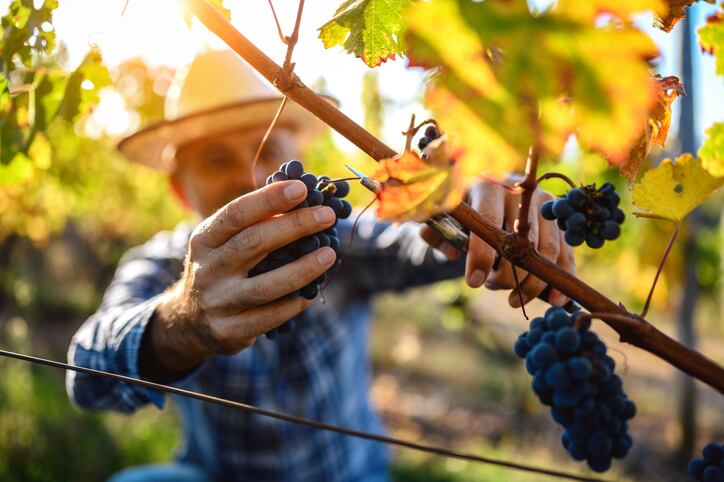Spring frosts decimated around 30% of the cultivations in France and northern Italy; while hail, droughts and diseases have further accentuated losses.
However, Copa and Cogeca – associations representing European farmers and agri-cooperatives - say the quality of grapes is considerably higher.
18% drop in biggest wine producing countries
Italy, France and Spain represent the biggest wine producing countries in Europe. Together, wine production in these countries is estimated to come in at around 117.3 million hectolitres in 2021/2022: an 18% drop from 2020/2021.
France is expected to suffer the sharpest drop, down 29% compared to 2020/21, as the harvest is unlikely to surpass 33.3 million hectolitres.
The harvest in Bourgogne (France) started last weekend, after a 'trying year punctuated by challenging weather events'.
'Winemakers will be producing this year’s cuvées from some very low volumes, depending on how badly the area was hit by frost or hail,' notes the Bourgogne Wine Board.
Spring frosts, which decimated approximately 30% of the cultivations in the country, were followed by plant diseases due to summer humidity.
The result is expected to be a historically low harvest, inferior to the ones of 1991 and 2017 and comparable to those of 1977.
In Italy, wine production is estimated to come in between 43.7 million and 45 million hectolitres, registering a 9% drop.
“The varying climatic conditions ranging from spring frosts to summer hail, storms and drought have resulted in substantial qualitative and quantitative differences even between neighbouring wine-growing areas," notes Copa-Cogeca.
"Many areas in northern and central Italy were hit hard by the spring frosts which destroyed up to 40% of the new flower buds, but there are good prospects for white wine.”
Spain foresees a harvest of 39.5 million hectolitres, down 7 million hectolitres from the previous year of 46.5 million hectolitres.
“The harvest has begun with very good quality fruit but is expected to be short, especially due to the summer drought and the occasional frost and hail incidents.”
In Germany, the harvest volumes are expected to be below 9 million hectolitres and below the 10-year average yield. Partial yield losses will be due to Peronospora [a pathogen], the spring frost and hail incidents. 2021, however, promises to be a good year for sparkling wines.
Portugal is the only country where an increase is expected: albeit a small one of 1%.
“The drops in production in Azores, Minho, and Lisbon are expected to be offset by the increases in the winegrowing regions of Douro and Oporto and the Terras de Cistercian. Due to these increases, good quality wines are expected.”
Hungary expects harvest yields to range between 2.5 and 3 million hectolitres.
Luca Rigotti, Chairman of the Copa-Cogeca Working Party on Wine says the wine industry has faced number of challenges recently: not least with the closure of much of the on-trade across Europe and the damaging effect of tariffs in the US-EU trade dispute over aircraft subsidies.
“The re-opening of the HoReCa sector and the resumption of exports, including to the US following the suspension of tariffs related to the Boeing-Airbus dispute, brings a moderate optimism,” said Rigotti.
“However, the minor production and the long-lasting negative effects of the COVID-19 pandemic show that the sector needs appropriate management tools to address market disturbances.”

